I’m not going to make any excuses for the long gap since the last entry in this project a year ago at the start of the quarantine. I just lost track. I do have good intentions to get back on with it, but, who knows? Maybe I’ll still be doing this 30 years from now when I’m in my 90s, and perhaps even narrowing in on the finish line….
 We’re on to Cambodia, a southeast Asian nation almost exactly the size of the state of Oklahoma (less than 1 square mile difference). It does have almost four times the population of Oklahoma, and, not surprisingly, different official languages – Khmer versus English, Choctaw, and Cherokee. And, while the majority of Oklahomans are white (69%), and evangelical Christian (53%), Cambodians are, by and large Khmer (90%) and Buddhist (97%). There are other demographic differences – Oklahomans are almost evenly split male and female, while women outnumber men in Cambodia 1.6 to 1. Slightly over half of Cambodia’s population is 21 or younger, while in Oklahoma it’s only a little over a third. On the other hand, both have an average life expectancy of 75 years.
We’re on to Cambodia, a southeast Asian nation almost exactly the size of the state of Oklahoma (less than 1 square mile difference). It does have almost four times the population of Oklahoma, and, not surprisingly, different official languages – Khmer versus English, Choctaw, and Cherokee. And, while the majority of Oklahomans are white (69%), and evangelical Christian (53%), Cambodians are, by and large Khmer (90%) and Buddhist (97%). There are other demographic differences – Oklahomans are almost evenly split male and female, while women outnumber men in Cambodia 1.6 to 1. Slightly over half of Cambodia’s population is 21 or younger, while in Oklahoma it’s only a little over a third. On the other hand, both have an average life expectancy of 75 years.
In the cuisine arena, Khmer cuisine, obviously the dominant one of the country, relies heavily on rice and freshwater fish. Seasoning is heavily focused on fermented pastes and sauces, from common ones like soy sauce, fish sauce, oyster sauce, or tamarind sauce, to complex ones like fermented fish and shrimp pastes. The most ubiquitous of the latter is prahok, a fermented fish paste (that I wasn’t able to find), followed by kapi (fermented shrimp paste, which I was).
When it came to deciding on dishes, the soup was an easy pick – Samlar kakou (with various English spelling variants) is considered one of the country’s national dishes. It’s a soup that can be made with fish, chicken, or pork, and it’s heavily flavored with the fermented fish paste and either lemongrass or kafir lime. The “bread” was a bit more difficult, as in terms of things like actual breads, much of what I found seemed based on the French colonial occupation (1863-1953), so I decided to head more into something similar to empanadas, which is where this project launched from, and go with the country’s most classic steamed bun or dumpling that I could find, Num ka chai, steamed garlic chive “cakes”. And, away we go!
Let’s start with the filling for the garlic chive cakes. First off – garlic chives – different, far more pungent flavor, than what we think of as chives. Here, washed well, cut into 1/2″ segments, and sauteed with chopped garlic, salt, sugar, and baking soda (optional, but helps keep them bright green); then drained and left to cool. I’m not going to give a photo for every step, because this would be too long of a post, and it’s going to be long already. If you decide you want to make these, send me an email and I’ll give you a more exacting step by step recipe, though basically I followed this one, with quantities halved.
A mix of tapioca starch, rice flour, and glutinous, or sweet, rice flour, with salt, sugar, water, and vegetable oil. Whisked together to form a smooth, lump-free liquid, then cooked over low heat, constantly stirring, until it forms a thick, slightly sticky mass – cooked long enough that it’s started to dry out, but not color. Then turned out on a board with a good amount of tapioca starch and kneaded while hot until smooth and basically not sticky anymore.
Form into small balls, about the size of a walnut, and then roll or press out into thin rounds. Split the filling between them, then basically pinch around them gradually closing them into this bun shape. Traditionally steamed over banana leaves, those weren’t available, cabbage or lettuce leaves will work. Steamed for about 12 minutes until semi-translucent. These should be steamed at last minute, as once they cool, they’re not really reheatable – they get gummy. The recommendation from the person in the linked recipe was that if you had leftover ones, instead of reheating them via steamer or microwave, just fry them…
…which I did with a couple of leftover ones. I like both versions, maybe with a slight edge towards the fried ones. But then, who doesn’t like fried foods? I did find the filling to be just slightly bland – I know it’s not traditional, but I think I’d want a good pinch of salt in it if I made them again.
The dipping sauce is an equal part blend of soy sauce, molasses, sriracha chili sauce, and black vinegar.
Let’s move on to the soup!
You need roasted rice powder for this – so, some uncooked rice, into the oven, until nice and golden brown, then ground in the spice grinder to a coarse powder. It’s going to be used for both flavor and as a thickening agent for the soup.
You also need lemongrass (or kafir lime) paste – a blend of lemongrass, shallots (none available here at the moment, so I used a small red onion), garlic, and ginger (or galangal), blended with a bit of equal parts olive oil and water, just enough to make a smooth paste in the blender. Yum. The extra of that is in the fridge!
This soup can be made with various different meats. I liked the sound of a version with chicken wings and pork rib bones, so we have both of those, cut up here, plus some palm sugar and the lemongrass paste. Not pictured, because I left it sitting off to the side, the roasted rice powder and a couple of tablespoons of the fermented fish or shrimp paste. In your pot, brown the two meats in a little olive oil. When browned, add the palm sugar, fish paste, a couple of dollops of the lemongrass paste, and half the roasted rice powder. Cook that out for a couple of minutes until nice and fragrant.
The vegetables – green beans (traditionally those long snake beans, but none available in Barrio Chino right now, so I just used regular green beans cut into 2″ segments), green papaya (also not available, so I found the hardest, most underripe feeling papaya that I could, and went with that – not quite the same, but it worked), Thai eggplant (which are small, globe shaped green eggplants, but, again, not available here, I went with Japanese eggplants), kabocha squash, and mushrooms (various recommendations for type, from straw, to oyster, to baby button, I went with the last).
Add all the vegetables at once to the pot and top with chicken stock. Bring to a boil, reduce heat, and simmer for about 15 minutes until the vegetables are almost cooked.
Baby mustard greens (yet another “not available”, this may be the most substituted recipe I’ve done to date, so I used local radichetta, a slightly spicy bitter green), and fresh chilies. Chop the latter, and add both to the soup, along with the remaining roasted rice powder. Simmer for another 10 minutes, and… done! Check your seasoning, I found it to be right on target, delicious. But if you find it bitter, you could stir in a little more palm sugar, or if you don’t find either the lemongrass or fish paste flavors intense enough, you could fry those up in a little oil and then add to the pot. We were happy, as it was!
Dinner is served!
Assuming all goes as planned, next time… we’re headed to Africa, and Cameroon.
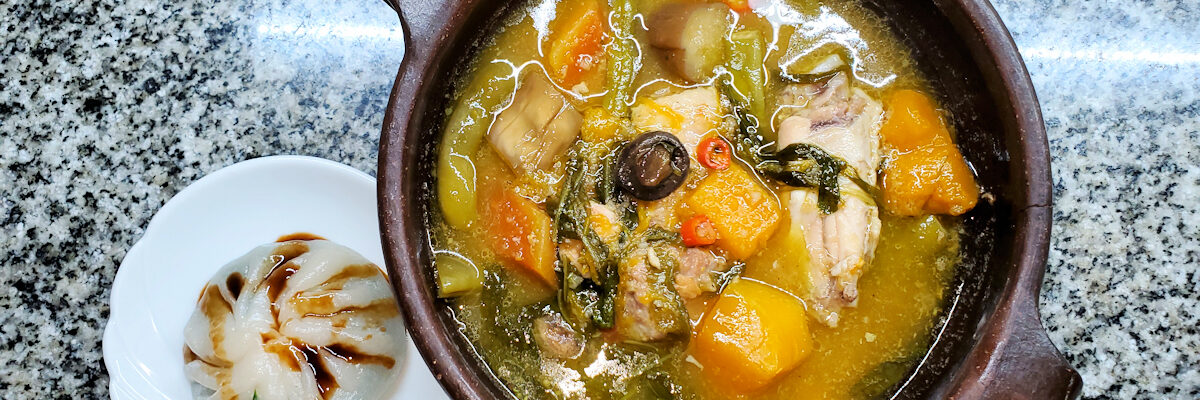
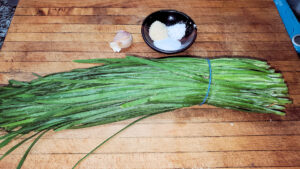
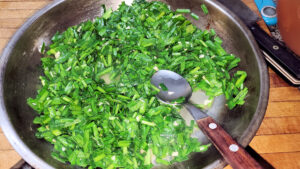
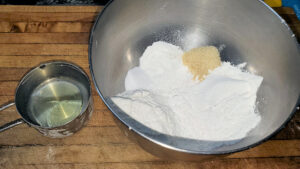

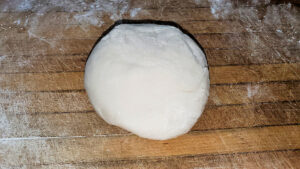
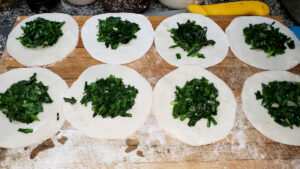
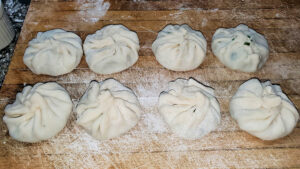
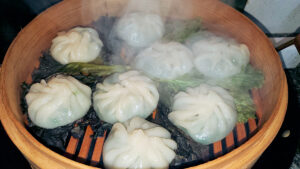
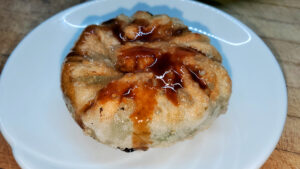
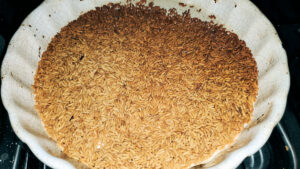
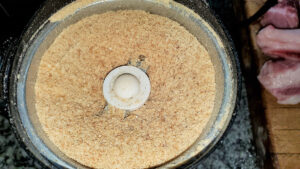
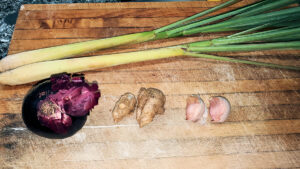
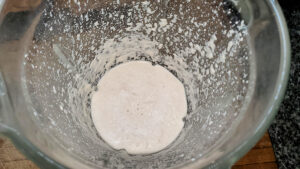
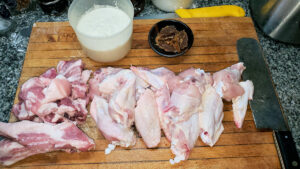
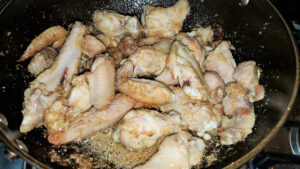
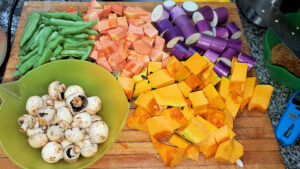
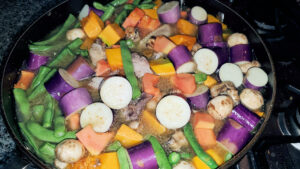
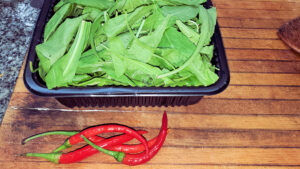
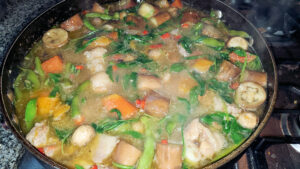
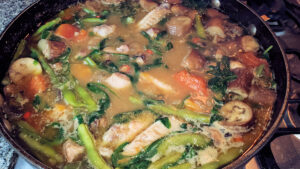
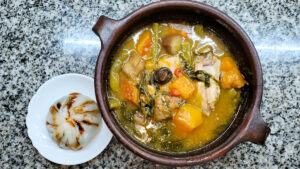
Thanks for posting these! I found them about 2 yrs ago when I embarked on my own “gee, it would be fun to bake a bread from every country” Breads of the World tour, and was Googling recipes. If it makes you feel any better, I am also still only in the B countries 😉
Ha! Yes, it does. Good intentions and all, and I started out at a fast clip of once a week, but that broke down really quickly. Some of it is just how much research it takes to find what you really want to do. I’m bogged down with Cameroon at the moment, simply because I’m looking at a dozen different soups, none of which I have any clue what they taste like, and for which half the ingredients probably aren’t available here, trying to figure it all out. I’m going to go and check out your Instagram feed right now!
[…] Assuming we’re staying on alphabetical track, next time, we head to Cambodia. […]